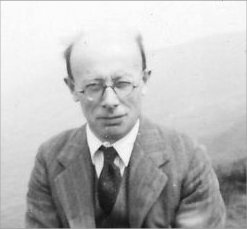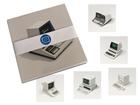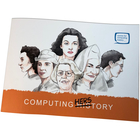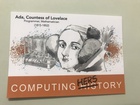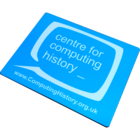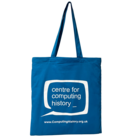Max Newman
|
Max Newman 1897-1984 Maxwell Herman Alexander Newman was a British mathematician who studied at St John's College, Cambridge. His studies were interrupted by World War I, during which his German father was interned as an 'enemy alien' before returning to Germany without his family. Max was called up for military service in 1918 but avoided the conflict through conscientious objection. He finally graduated from Cambridge in 1921 as a 'wrangler' (gaining first class honours) and took up a Fellowship at St John's working in the field of topology. He married Lyn Irvine, a writer in Leonard and Virginia Woolf's circle, in 1934. In 1935, student Alan Turing attended one of Newman's classes and was inspired to pursue his pioneering work on the 'Entscheidungsproblem' within which he proposed a hypothetical computing machine. Newman was so impressed by Turing's work that he took him under his wing, helped him publish his work and arranged for him to spend time at Princeton, with which Newman had links. Newman remained at Cambridge during the early years of World War II, until he joined the war effort in codebreaking at Bletchley Park in 1942. Alan Turing was already there. At Bletchley Newman initially joined John Tiltman and Bill Tutte's work on Tunny, but he didn't enjoy the work - until he had the idea of mechanising it. By the end of 1942 he had been put in charge of developing codebreaking machinery at Bletchley Park in what became known as 'The Newmanry' and developed the first 'Heath Robinson' machine (as it came to be known); a complex, slow and unreliable attempt at mechanised codebreaking. But the developments Newman's team had made were crucial first steps in 'computing' and once Tommy Flowers lent his valve-based telephone exchange expertise to Newman's enterprise, the first Colossus was produced. By the end of the war there were 10 codebreaking Colossi in existence, being operated around the clock by over 200 Wrens (Women's Royal Navy Service), and the machines have been credited with shortening the war by perhaps two years. But it was what max Newman did next that really made a contribution to the development of computing. 8 of the 10 Colossi were destroyed after the war and the remaining two went in total secrecy to GCHQ. Everyone who had worked on them at Bletchley was sworn to secrecy about their work but Newman (and Turing and others) had seen the potential for electronic calculating machines. Newman resigned from Cambridge and joined his friend and fellow mathematician Patrick Blackett at Manchester University, where the two friends established a mathematics research team to work on computing machines. Using a grant of £35,000 Newman obtained from the Royal Society, of which he was a member, Newman recruited Jack Good and David Rees who had both worked in the Newmanry, and later (after struggling with the ACE project) Alan Turing too. Tommy Flowers was approached to join them as well, but he was contracted elsewhere; Freddie Williams was recruited to Chair of Electrical Engineering, bringing with him Tom Kilburn as research student. Together the team built the Manchester Baby, the world's first stored program computer, which ran its first successful program on 21st June 1948. The Williams-Kilburn Tube had been the final piece of the puzzle for Max Newman: he knew that a valve-based computer was a possibility from his work with Flowers at Bletchley and with von Neumann at Princeton, but Freddie Williams provided the answer to the memory problem - Max Newman's vision for a machine capable of high-level mathematics was made real. After the success of Baby and the subsequent development of the Manchester Mark I computer, Max Newman retreated back to the world of mathematics rather than engineering or computing, perhaps, as his son has since suggested, because computers then became linked too closely with the development of atomic weapons. Newman's early pacifist principles came back to the fore. He remained as Head of Manchester University's Maths department until 1964 and died in 1984 shortly after Bletchley Park's secrets were first made public. Magazine Articles Mentioning Max Newman :
|
|

